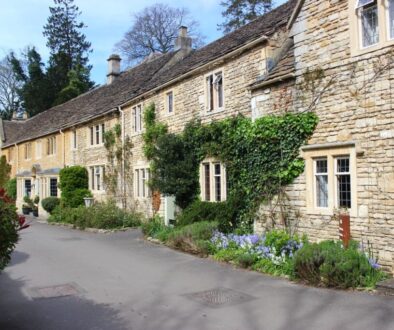Taking the pulse of rural healthcare
Rural people deserve high quality healthcare that meets their needs and aspirations, says Jessica Sellick.
Published by the Department of Health last year, the Green Paper Shaping the Future of Care Together sets out the Government’s proposals for ways to reform the care and support system for adults in England.
The Paper looked at how money could be better invested in prevention, rehabilitation and keeping people active and healthy. Importantly, the Paper states that “people with care and support needs should be treated as citizens with rights, rather than having to fight to get services. Everyone who receives care and support must be treated with dignity and kindness, and their human rights must be respected”.
In this way, the Green Paper included an expectation that wherever you are in England, you will have the right to have your care and support needs assessed in the same way thus aiming to create a level playing field and end the postcode lottery of services.
The Paper builds upon ‘High Quality Care for All’ (also published by the Department of Health), which defined ‘quality of care’ as “clinically effective, personal and safe”. The Final Report looked at the effectiveness of care, from the clinical procedure the patient receives to their quality of life after treatment and how to ensure patients are treated with compassion, dignity and respect in a clean, safe and well-managed environment.
And yet amid the commitments set out in these policy documents – with the goal of a patient centred and led NHS – nowhere are the consequences of when this breaks down more apparent than in The Healthcare Commission’s investigation into Mid Staffordshire NHS Foundation Trust. The Healthcare Commission, which reported last month, documented distressing incidents of patients routinely neglected, humiliated and in pain. It found that between 400 and 1,200 more people died at the Mid Staffordshire NHS Foundation Trust than at other hospital trusts between 2005 and 2008. The Commission (patients and relatives) attribute these findings to the Trust focusing on cutting costs and hitting government targets rather than putting the patients first. For me, these policy documents and the Healthcare Commission’s investigation raise interesting questions around how services can meet the changing needs of patients and how to make best use of available resources to deliver improvements in the health and well-being of people, no matter where they live. The provision of healthcare in rural areas, in particular, presents unique opportunities and challenges. I would like to offer 3 points.
Firstly, funding formulae. When the NHS was launched in 1948 it has a budget of £437 million (roughly £9 billion at today’s value). In 2008-2009 it received ten times that amount (more than £100 billion). The Operating Framework for the NHS in England produced annually, sets out the specific business and financial arrangements for this budget. As a general guide, approximately 60% of the NHS budget is used to pay staff, 20% pays for drugs and other supplies, with the remaining 20% split between buildings, equipment, training costs, medical equipment, catering and cleaning. What are the implications of this funding for rural communities? On the one hand, the NHS insists on ‘national standards’ which are applied without differentiation between urban and rural areas. On the other hand, the funding formulas used to allocate resources do not reflect the additional costs of providing healthcare services in rural areas or account for the changing (and ageing) population of rural England.
In response, the Commission for Rural Communities (CRC) suggests NHS funding could be allocated using a method similar to the ‘Arbuthnott formula’ in Scotland. The Arbuthnott Formula is a population-based calculation that gives extra weight to certain factors such as the number of older people in particular areas, levels of deprivation and additional costs of providing services in rural and remote areas. Since 2000, the formula has been used to distribute funding to NHS Boards for Hospital and Community Health Services and GP prescribing across Scotland, which together account for around 70% of the total healthcare budget.
Although between 1948 and 2010 there has been increased expenditure and investment in the NHS, last year the Government asked NHS authorities to come up with proposals to reorganise the service to save money as a result of the recession. Articles in the media in recent weeks have documented proposals for London where health authorities are proposing changes (including possible closures) to accident and emergency services and maternity units at 13 out of 36 hospitals. The plans of other health authorities have not been disclosed. How can we ensure that current resource allocations (the funding formulas) and any changes as a consequence of the recession do not discriminate against or mitigate for the health needs of rural communities?
Secondly, models of care and the delivery of healthcare services. Although ‘Shaping the Future of Care Together’ and ‘High Quality Care for All’ states how securing high quality sustainable care for populations in rural areas requires a range of innovative delivery models, they do not explore what these models might actually look like. The RSN believes that rural communities are diverse and different and that healthcare provision needs to be flexible, imaginative and require a very different design, style and mode of delivery.
In practice, an effective model of service delivery to meet the health and well-being needs of rural residents requires a joined-up approach where as many services as possible are delivered locally – from ‘First Responder Teams’ and the ambulance service, to hospitals, GP surgeries and dental practices. With this comes a specific set of challenges around providing (Government/public) funding for effective out of hours GP services, maintenance of community hospitals, air ambulance services and dispensaries in GP surgeries. But there are also opportunities here around developing multi-use health centres in rural locations that enable patients to get as many of their needs met in one place as possible, the development of a ‘one-stop shop’ for healthcare.
For some healthcare services (especially those that are highly-specialist), patients may need to travel. Many RSN Members have documented how transport is a problem – from needing to take 2 buses to get to the nearest hospital to being dependent upon friends and neighbours with a private car. To overcome this, Member suggestions include a wider taxi voucher scheme, telehealth initiatives (but that takes us back to the need to improve the speed and reliability of the broadband infrastructure in rural areas) and the use of existing mobile facilities (e.g. libraries) to distribute information and prescriptions where appropriate.
Thirdly, the perception that many people living in rural areas experience better physical health and enjoy healthier lifestyles is well rehearsed, but this is a complex picture wherein rural communities are often unheard voices due the very nature of their remoteness. This means underlying health problems can go undetected. As a volunteer at UTASS (Upper Teesdale Agricultural Support Services), I have experienced this first-hand. UTASS is a rural charity based in Middleton-in-Teesdale that was established as a result of unprecedented levels of suicide, higher than average numbers of people accessing mental health services and on prescribed anti-depressants. UTASS provides a 24 hour helpline service, offers emotional and befriending support in partnership with the Farm Crisis Network (FCN) and Royal Agricultural Benevolent Institute (RABI), complementary therapies (with the mental health charity MIND) and provides opportunities for other organisations to work from its premises (e.g. Durham Dales Action for Carers, North East Council for Addictions, Durham County Council Social Services). And yet UTASS is dealing with many of the challenges facing the voluntary, community and public sectors in delivering services – including funding (PCT funding for UTASS is coming to an end and it is not possible for this to be renewed) and how to safeguard health services in rural areas.
From policy documents produced in Whitehall to a rural charity in Teesdale; what is clear is that rural communities deserve access to high quality healthcare services that are appropriate to their needs and aspirations. In practice, this means healthcare services should be delivered in a way that makes full use of and enhances local facilities; involves public, voluntary, community and private sectors working together; and addresses ongoing challenges around budgets and funding, transport, the (de)centralisation of services and the stigma surrounding (mental) health issues. Only then will citizens have “rights, rather than have to fight to get services”.
Jessica Sellick is a rural consultant at Rose Regeneration. She can be contacted at jessica.sellick@roseregeneration.co.uk.


